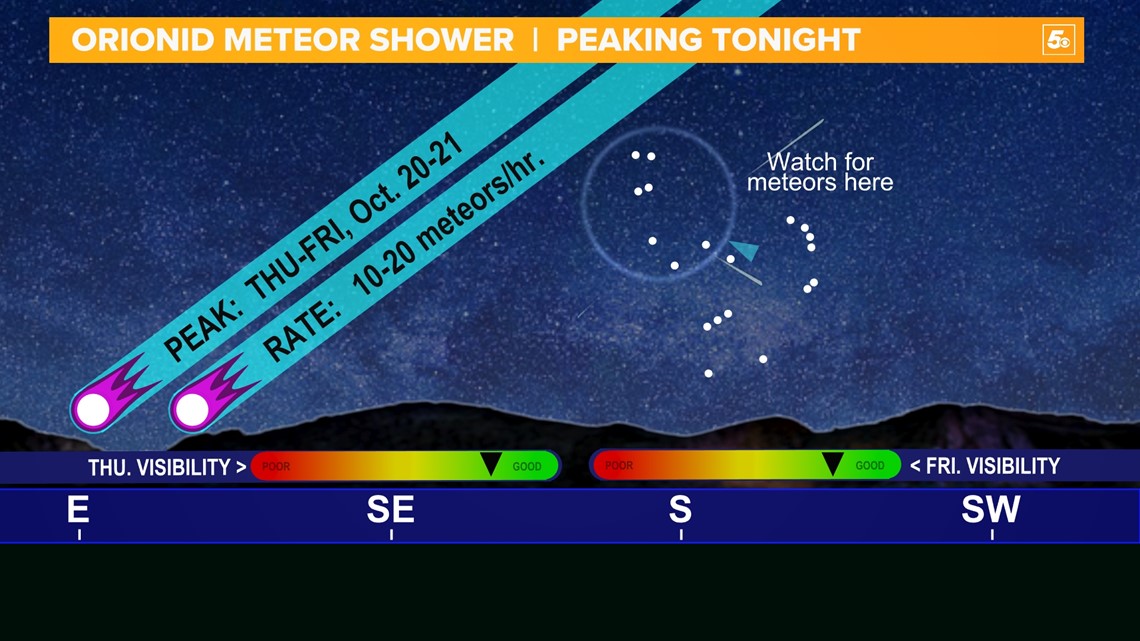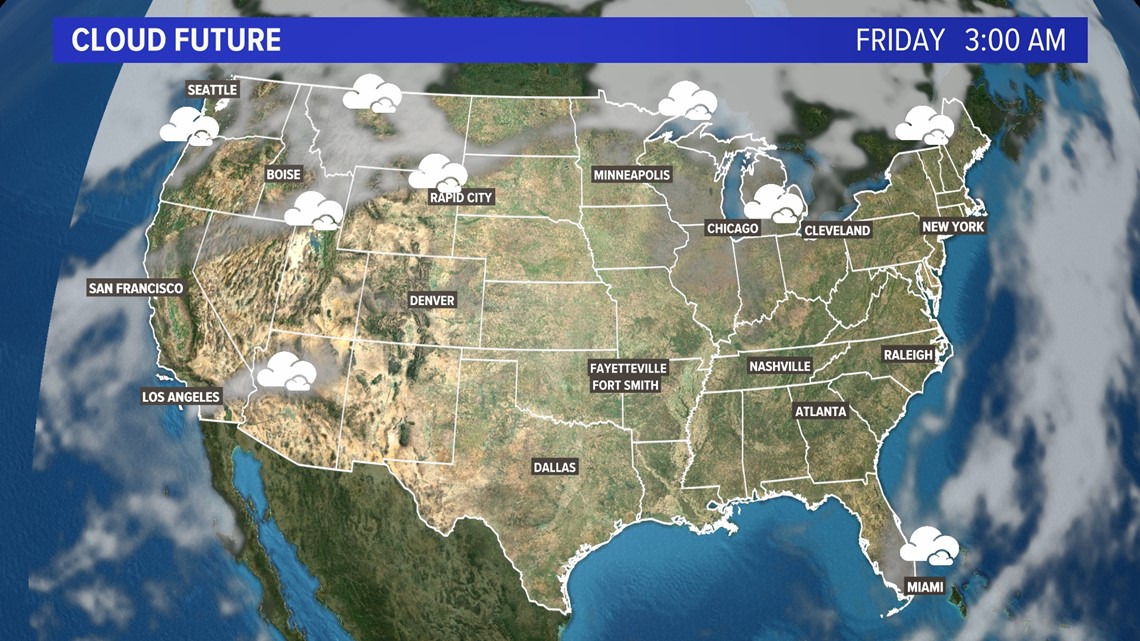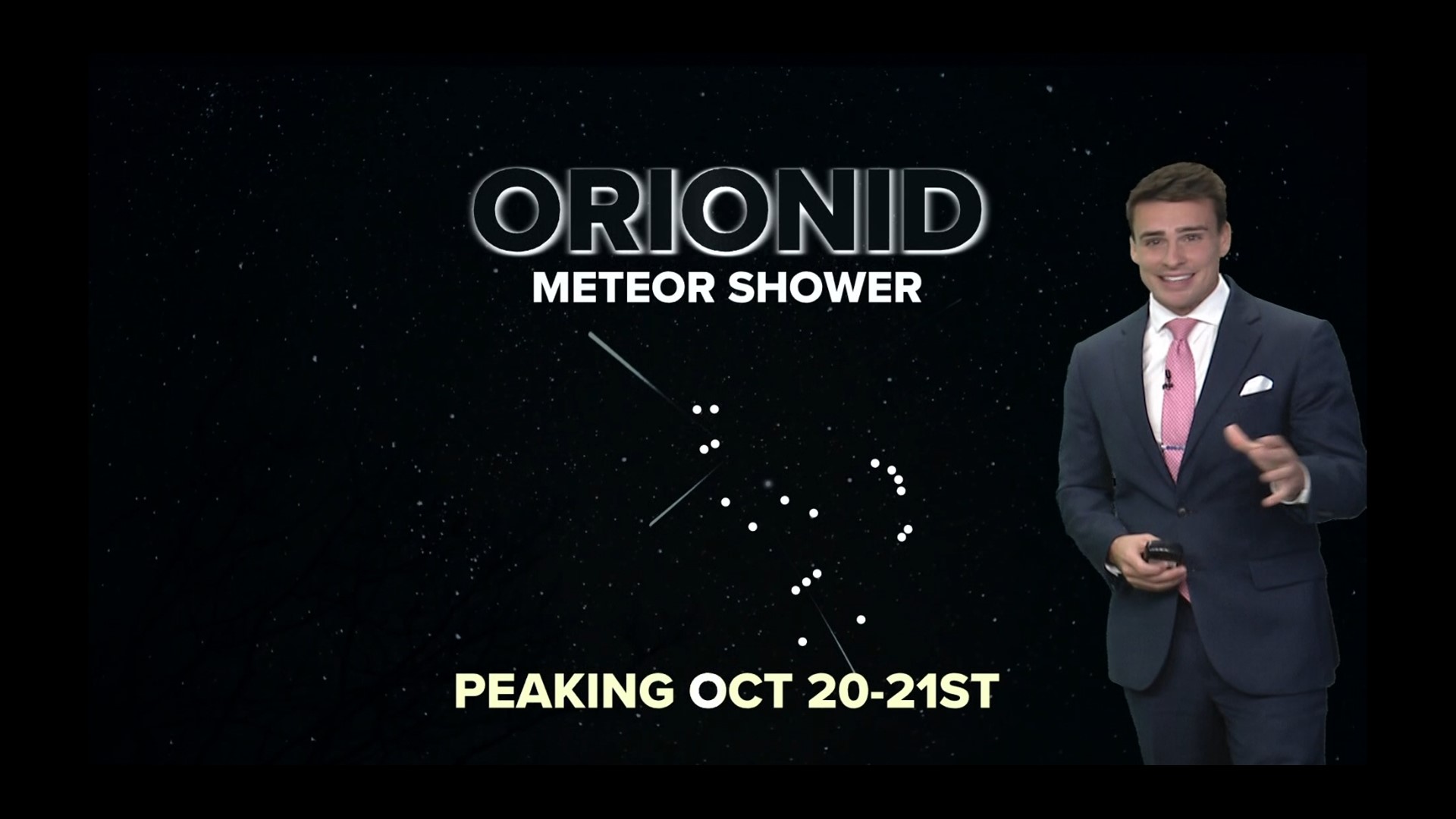ARKANSAS, USA — What would you wish for if you saw a shooting star? Your chances of seeing one will be higher tonight as the Orionid meteor shower peaks. The Earth is moving through Halley's Comet's debris field, which helps bring one of the most vivid meteor shower of season.
Tap HERE for our interactive satellite to see where clouds could get in the way of viewing the Orionid meteor shower.
WHAT TO EXPECT
The Orionid meteor shower has been technically visible since September 26th and will last until November 22nd, but the peak is technically Friday morning, October 21, 2022.
Orion is an easier constellation to stop because of his belt. However it's not just his belt and shied that are included. Go up a little bit and you'll see his club. This is where you should look.


You should see some shooting stars that generally can be as bright as some of the most vivid stars in the night sky.
Orion is an easier constellation to stop because of his belt. However it's not just his belt and shied that are included. Go up a little bit and you'll see his club. This is where you should look.
TIMING
The Orionids originate from the Orion constellation, especially at the top of the star cluster. In mid-October, Orion doesn't break above the horizon until near midnight. Generally to see the most shooting starts you'll want to look up in the second half of the night:
- Friday 1 AM to 5 AM
- Saturday 1 AM to 5 AM
If you miss the meteor shower, you may still see a shooting star from the Orionids until Thanksgiving, but just not as frequently.


WHERE TO LOOK | Northern Hemisphere
The Orion constellation first appears above the horizon in the Northern Hemisphere in the eastern sky. Then it will go up higher in the sky and back to the south. Later in the night, the constellation will slowly drift back down in the western sky.
Rough Timing:
- Near 1 AM: Look east
- Near 3 AM: Look up and south
- Near 5 AM: Look southwest
Let's get even more specific... The radiant, or location where it seems like the shooting stars are starting, is over the club of Orion, which is a bit above the belt.
WILL CLOUDS GET IN THE WAY?
Clouds continue to swirl in the northern U.S. generally within a couple hundred miles of the United States - Canada border. There may also be a few scattered clouds in the southwest.


A new cold front is starting to move into the Pacific Northwest. This will bring rain to much of the U.S. heartland and South next week.
Otherwise, plenty of clear skies should continue over the Plains and the South and Mid-Atlantic and Northeast.
HOW TO SEE THE SHOOTING STARS
NASA recommends that you wait at least 30 minutes outside to let your eyes adjust to the night sky in order to more easily spot possible shooting stars.
Make sure you get away from city lights. The less light pollution, the better...
Happy shooting star hunting!
-5NEWS Chief Meteorologist Matt Standridge

